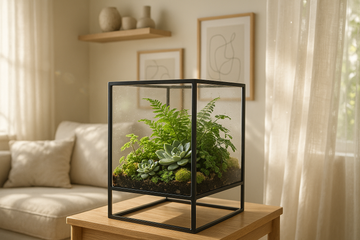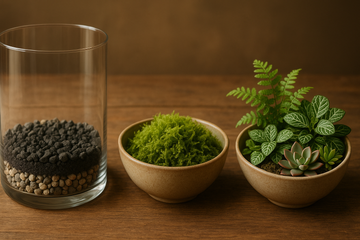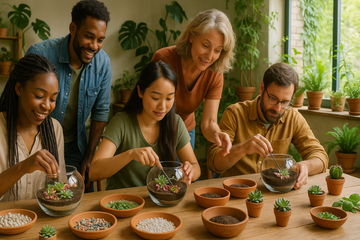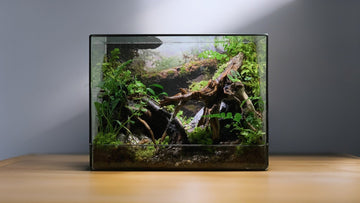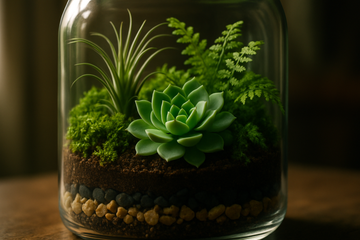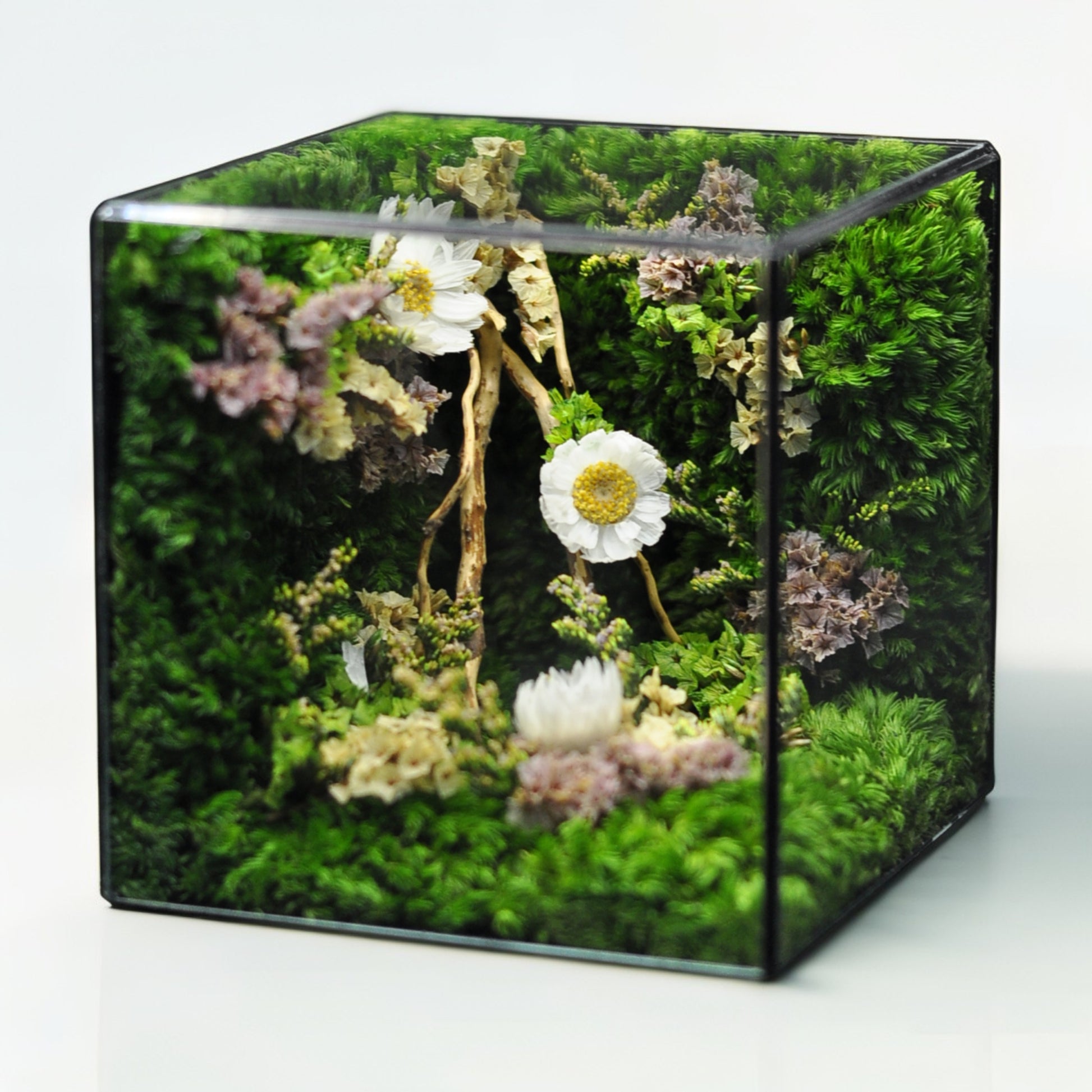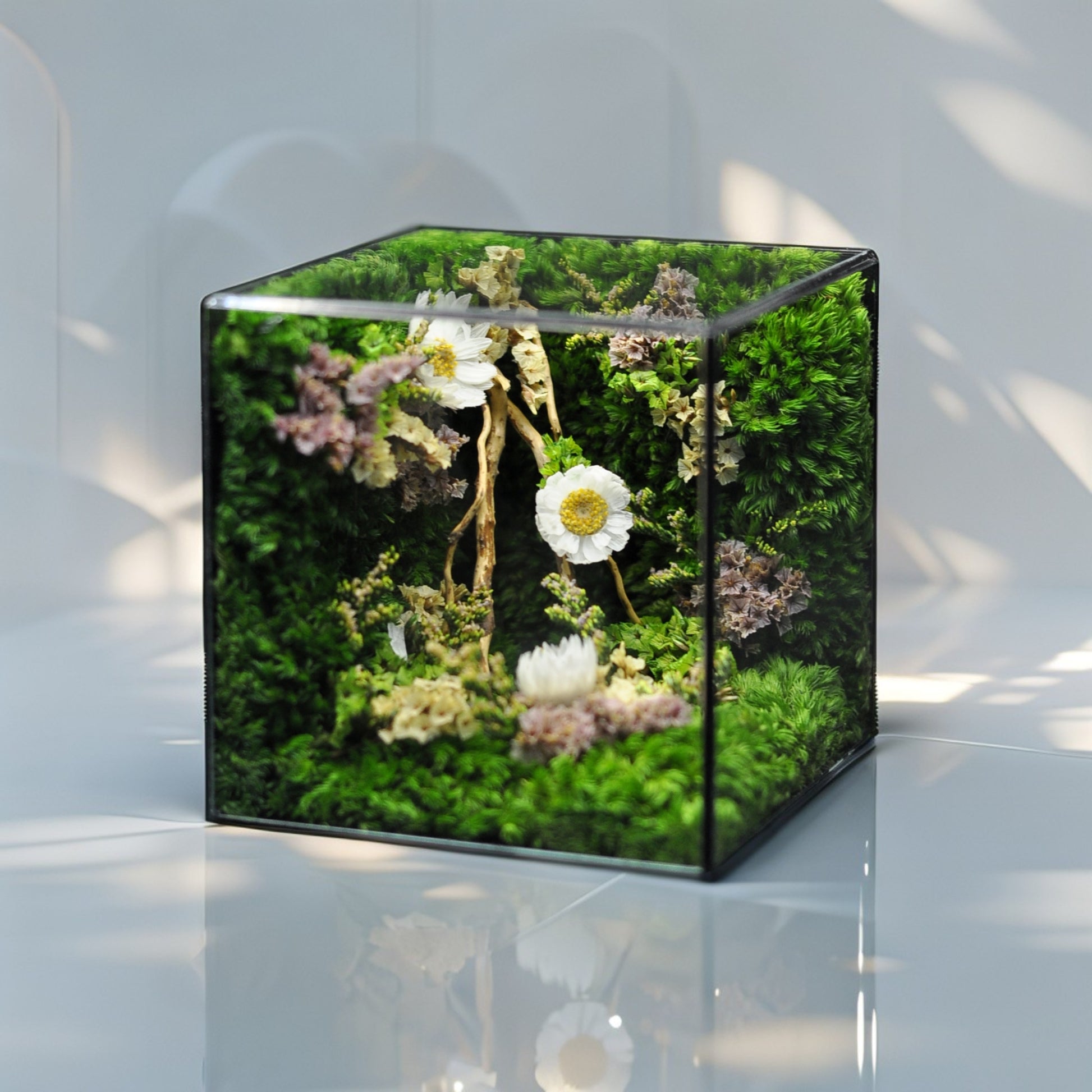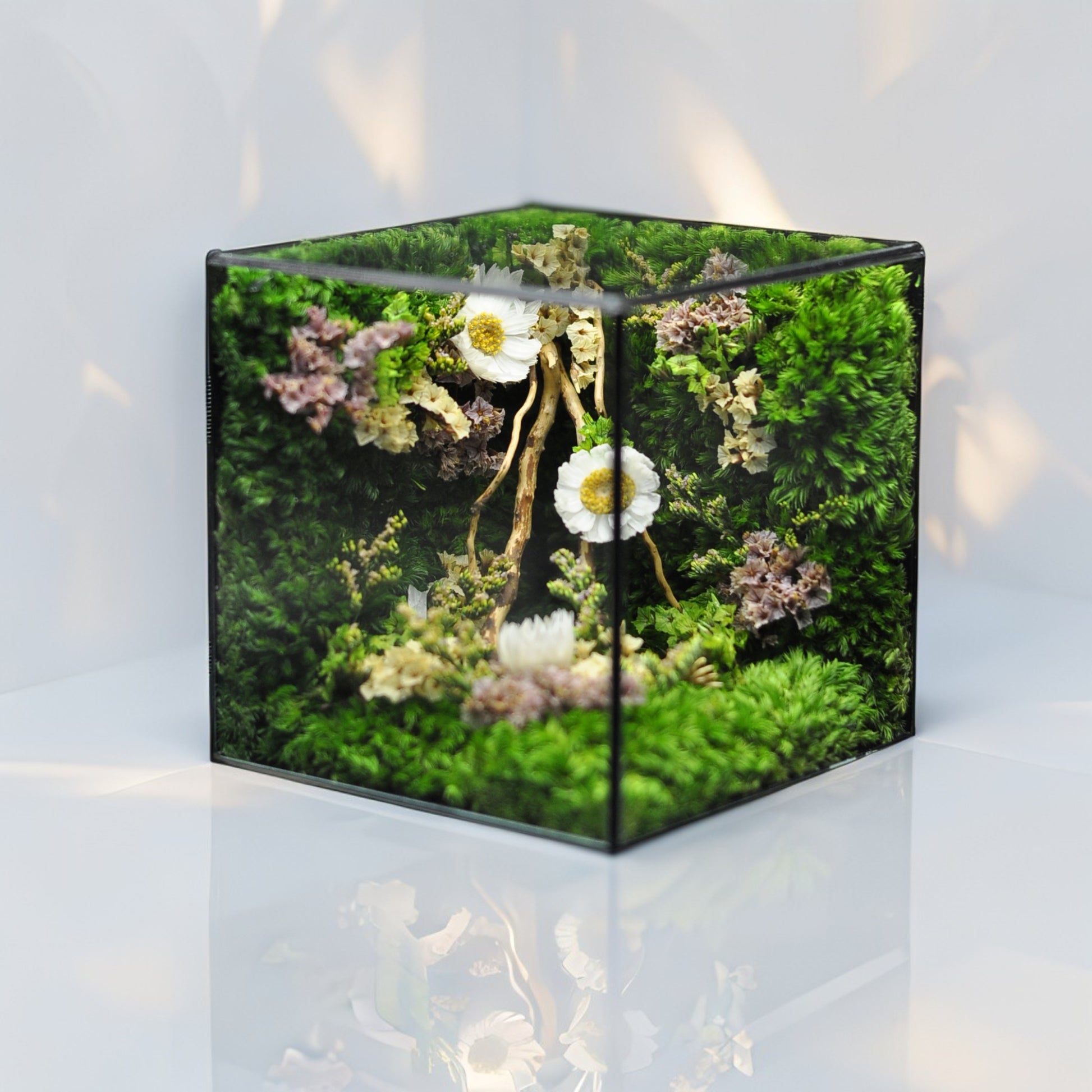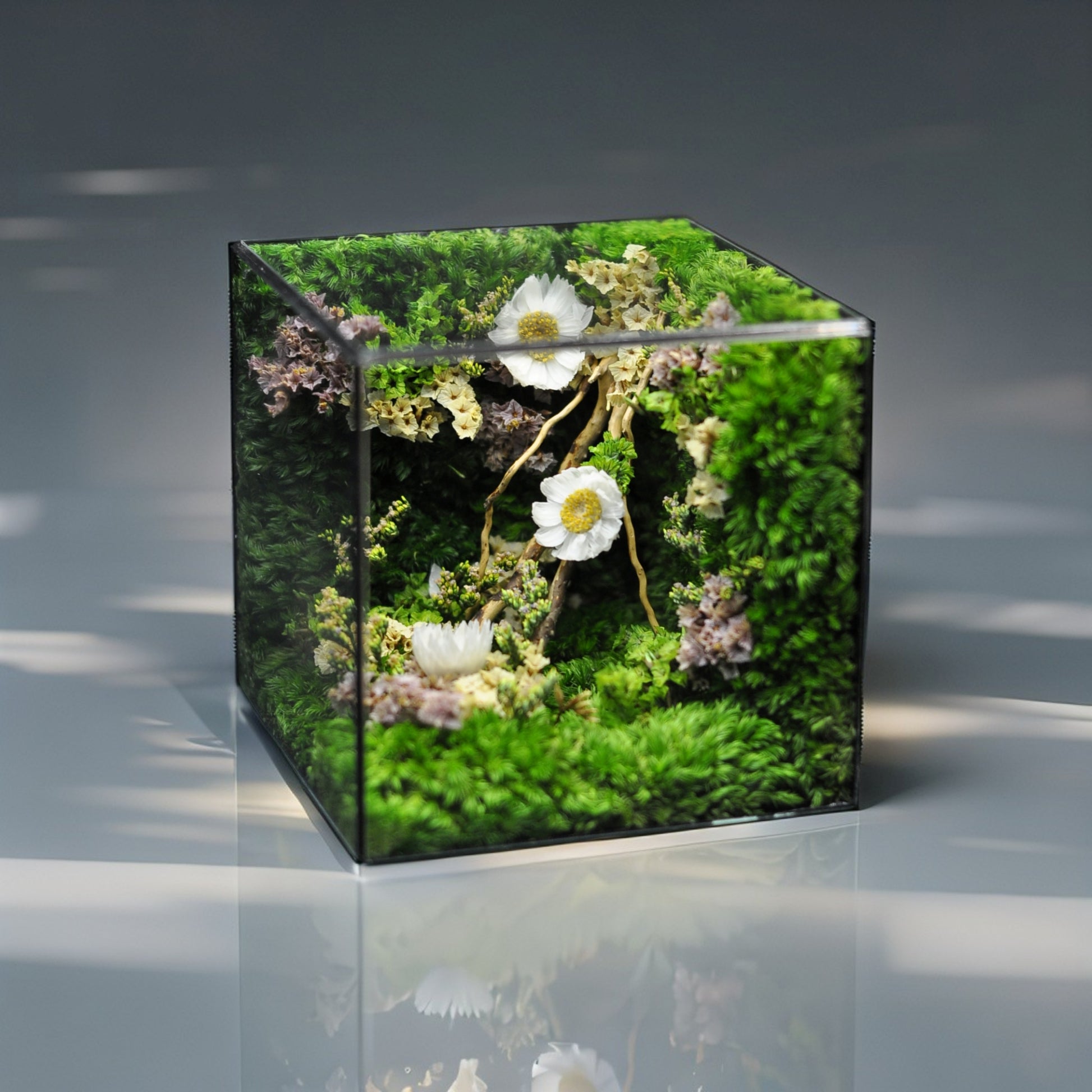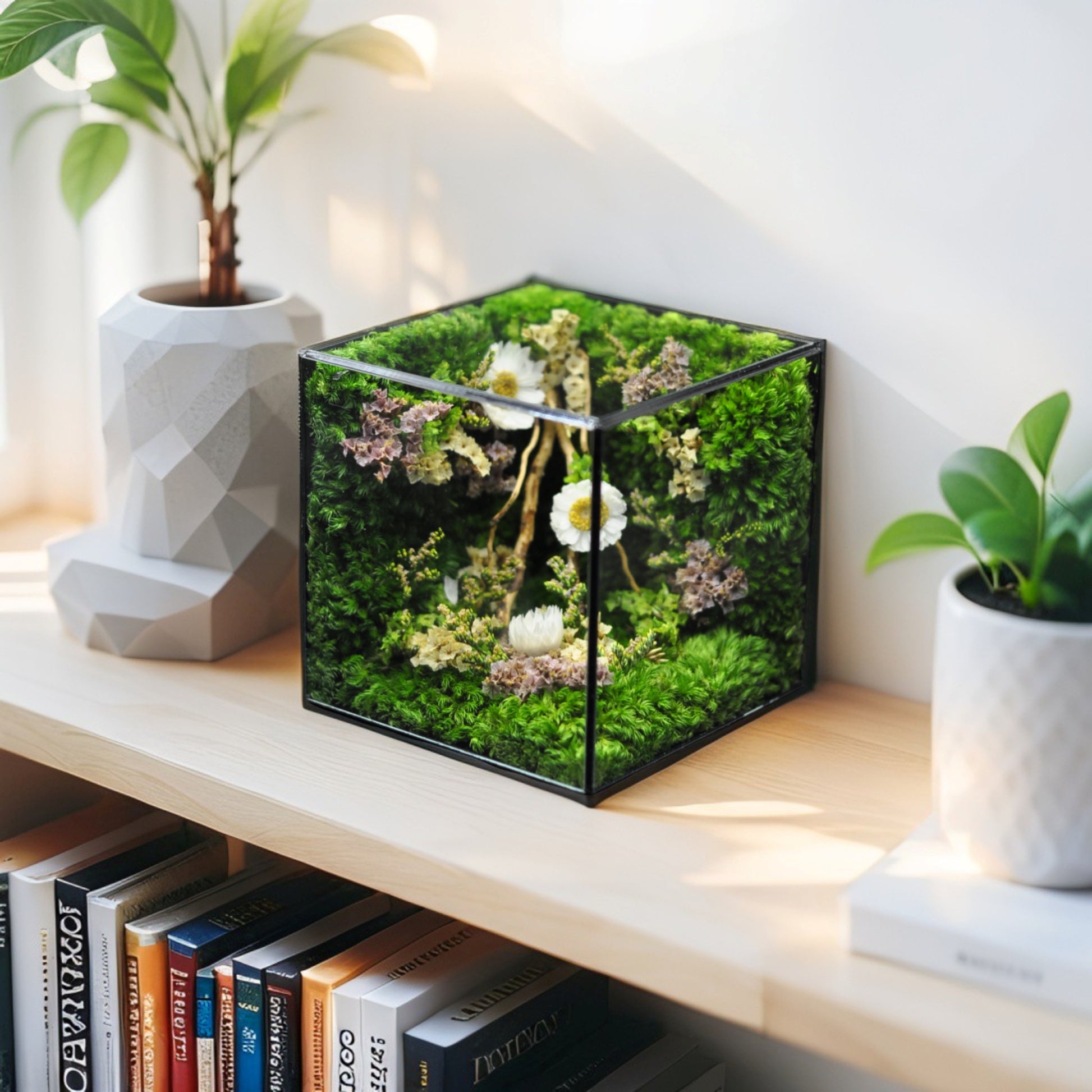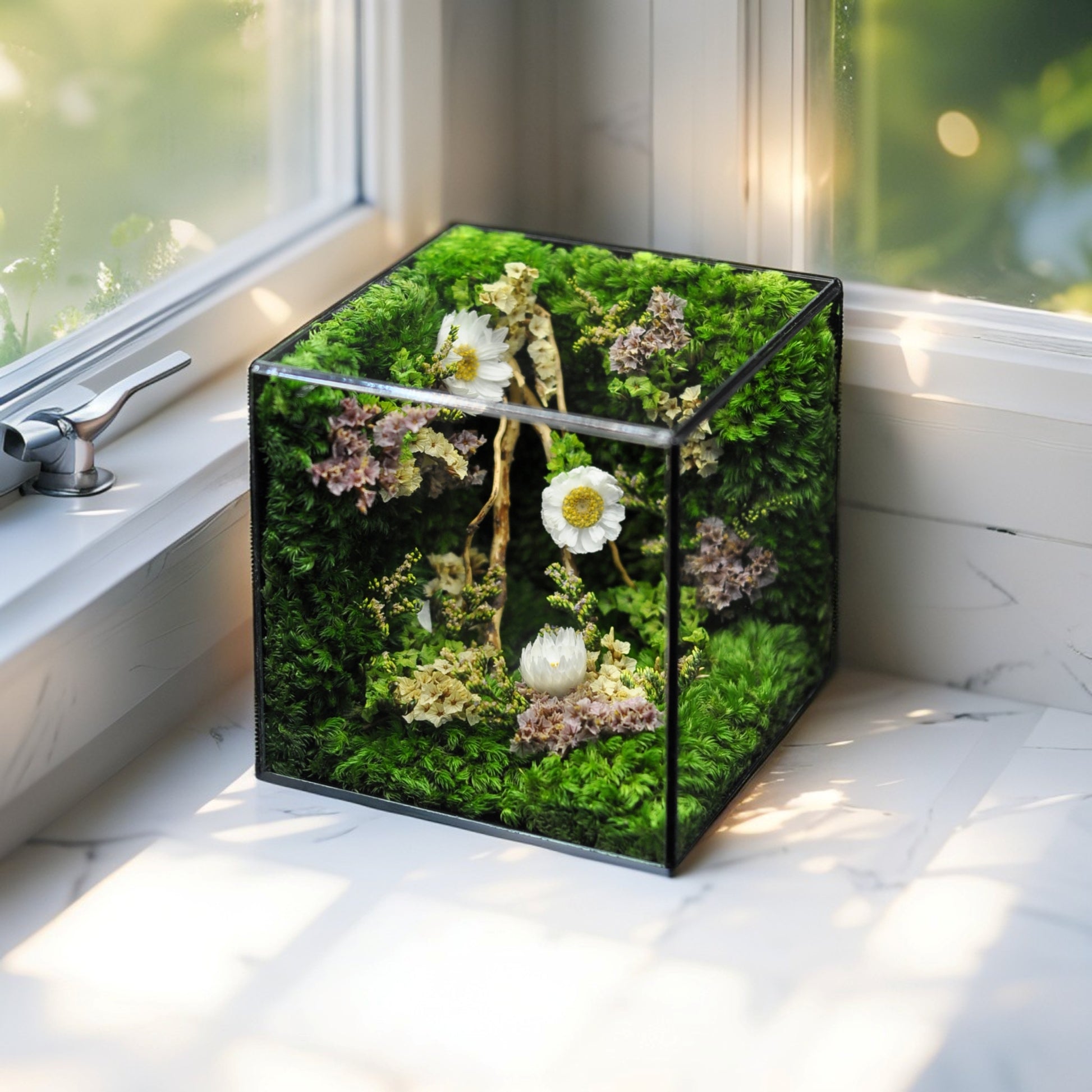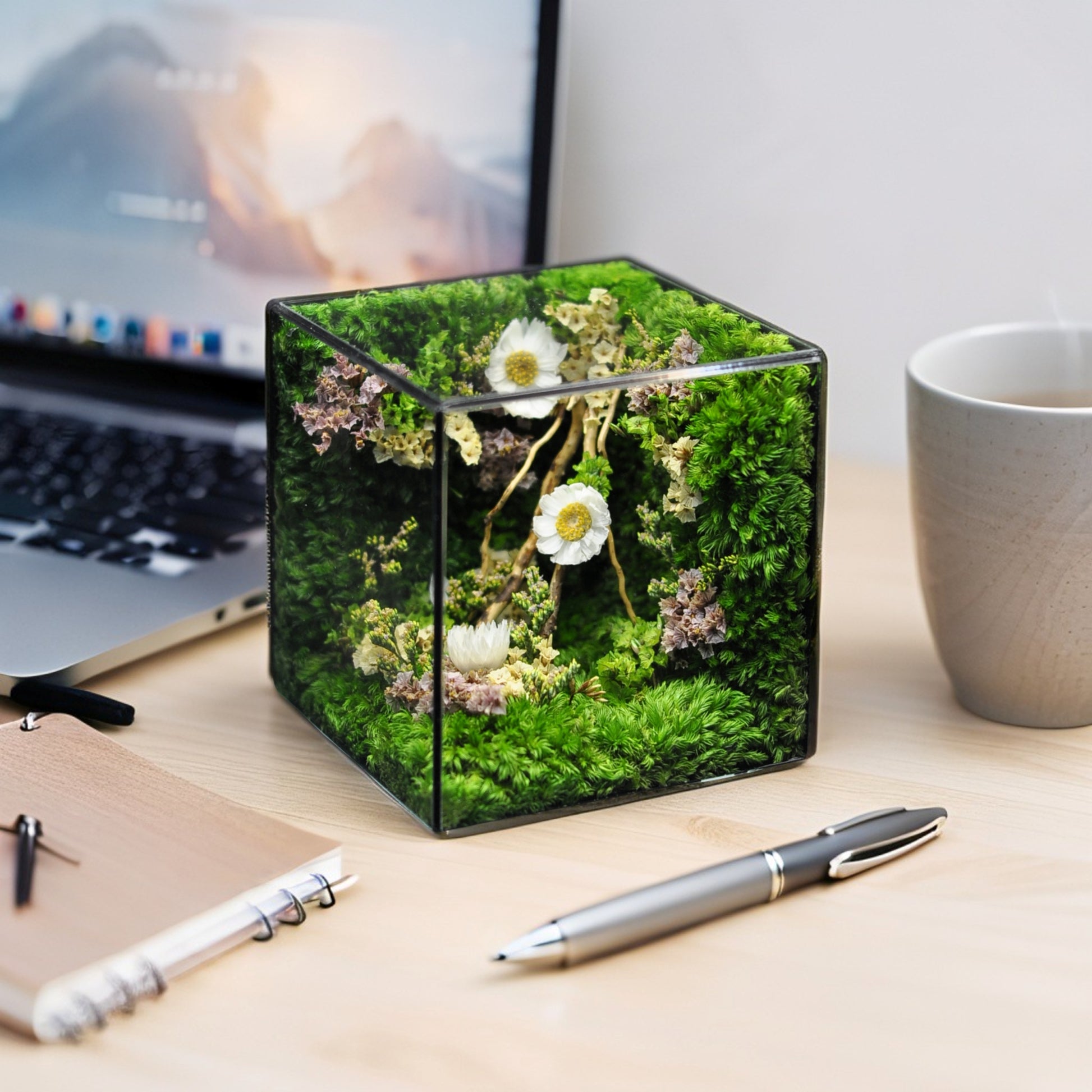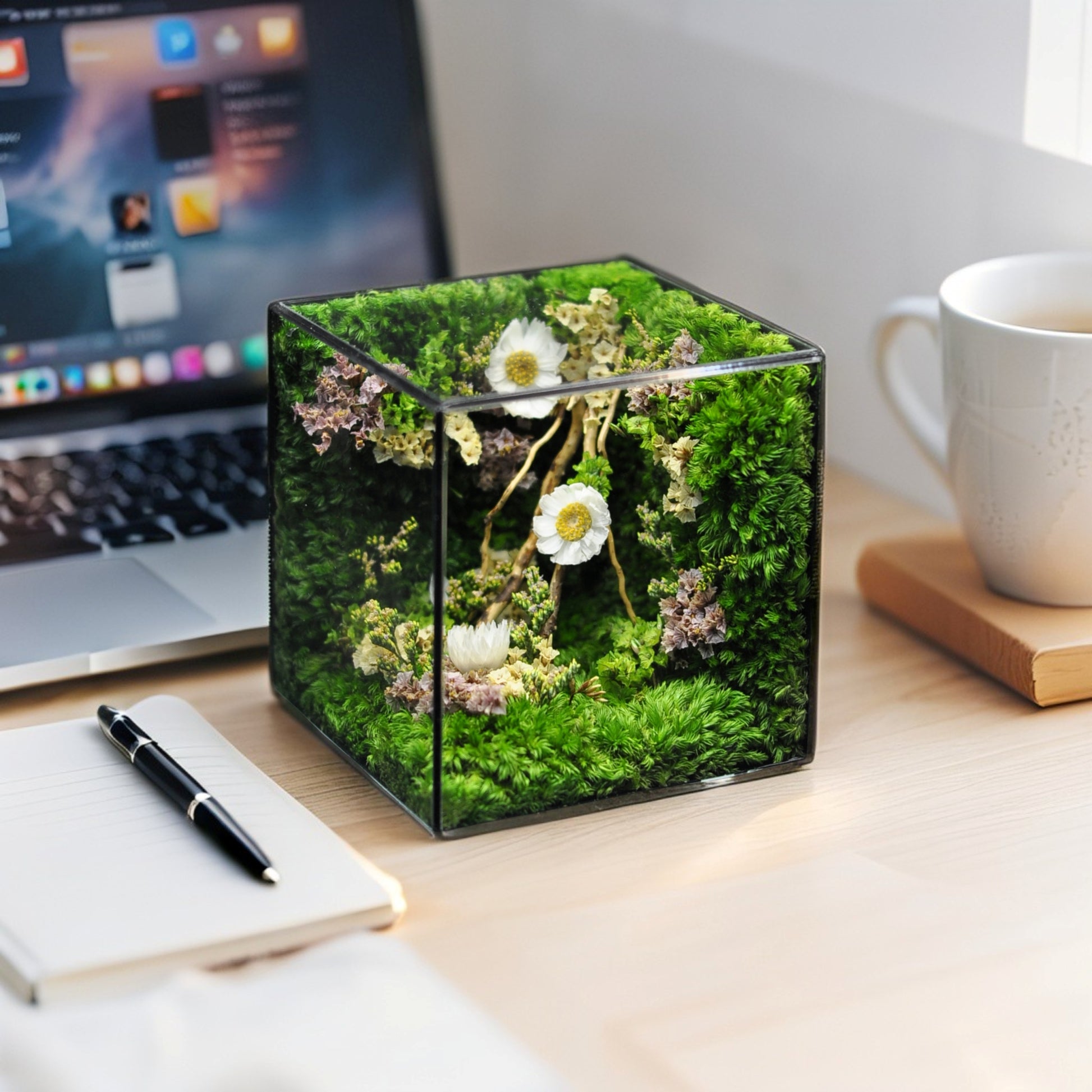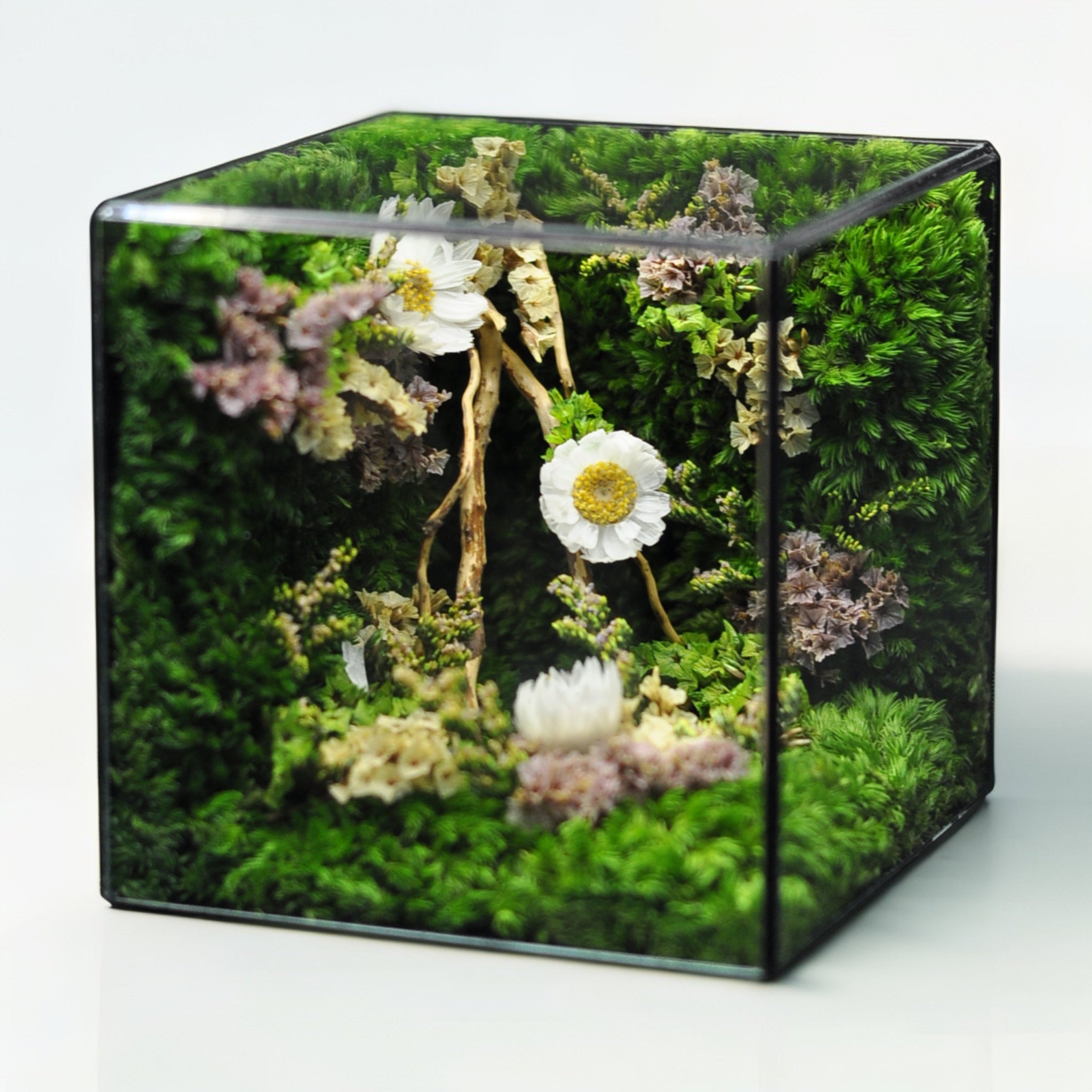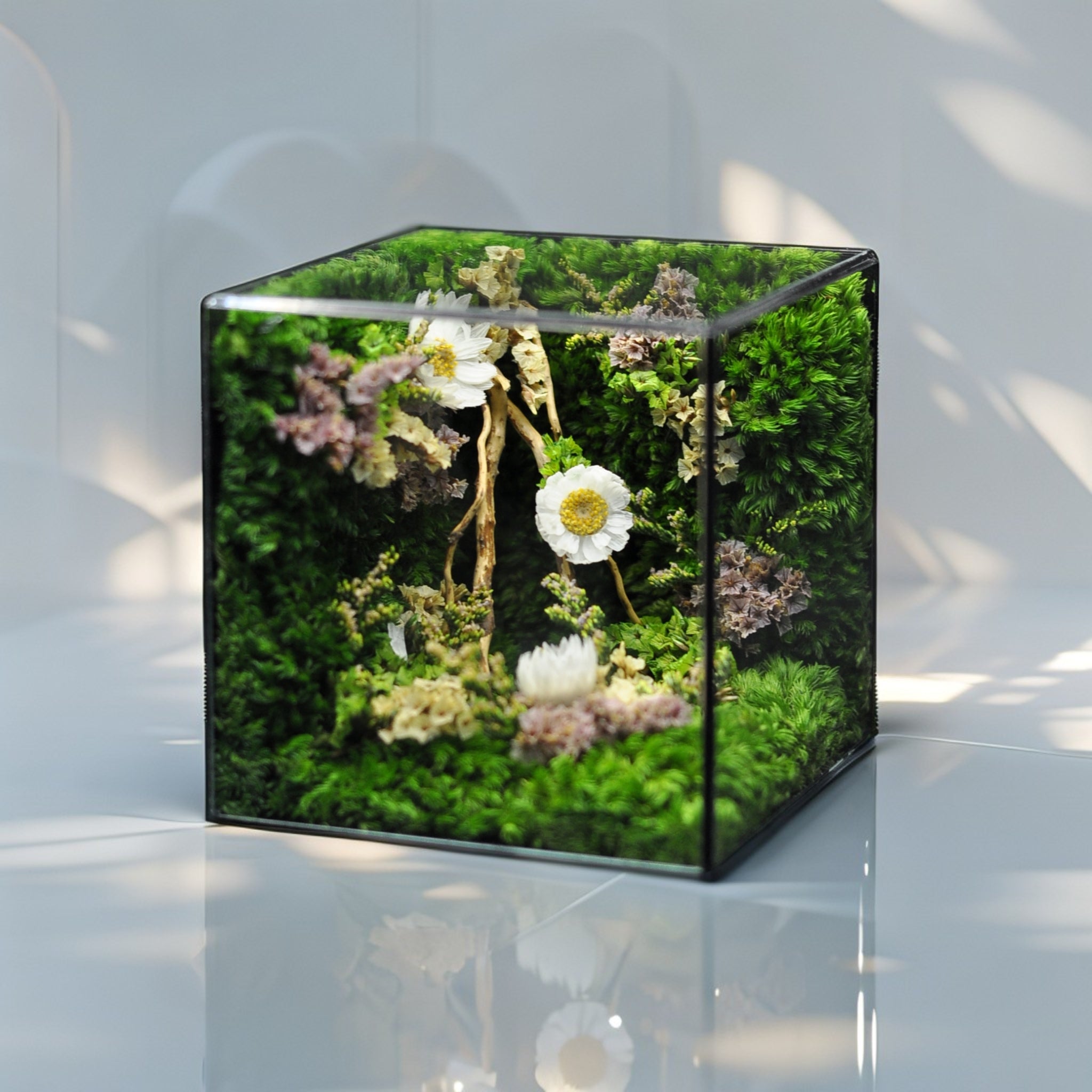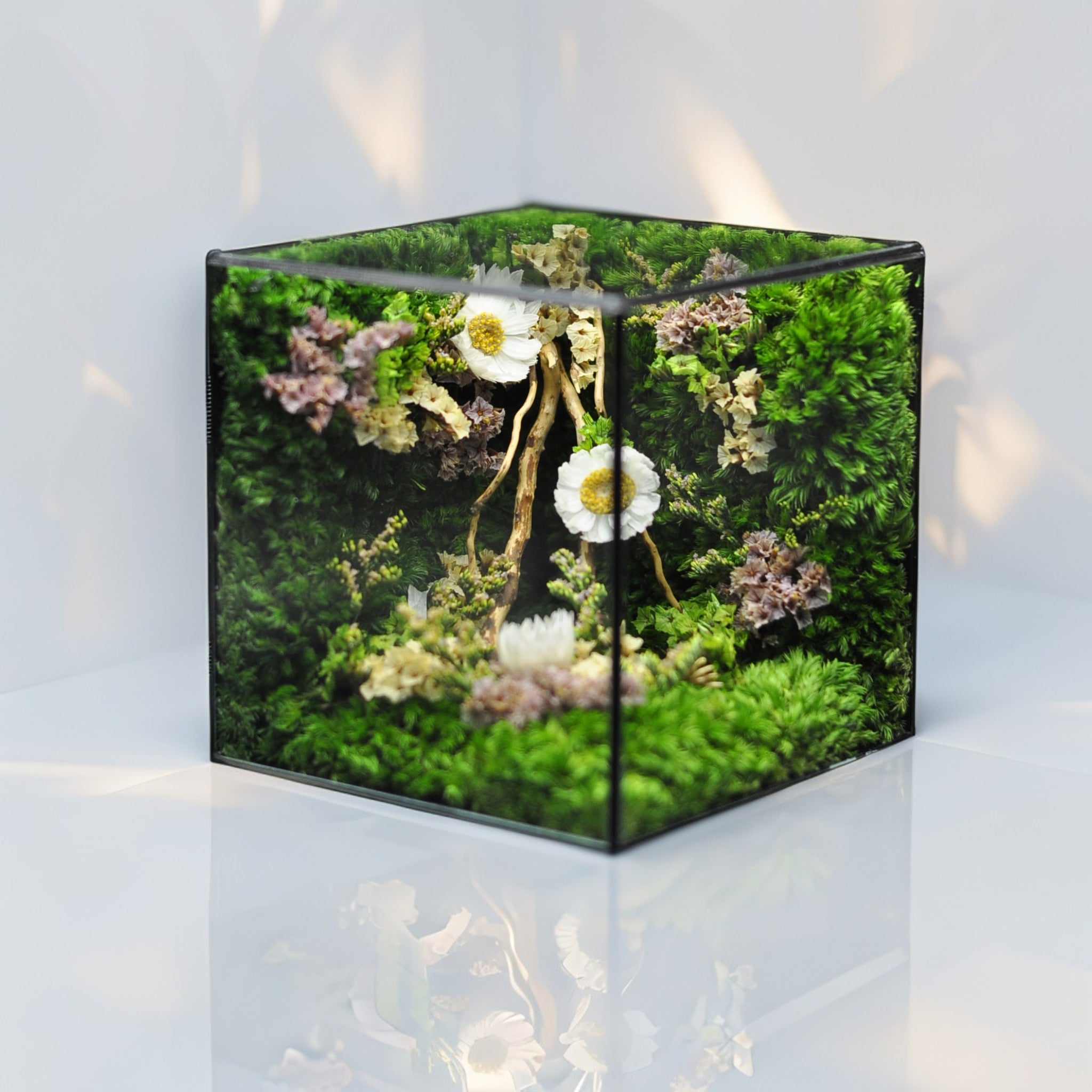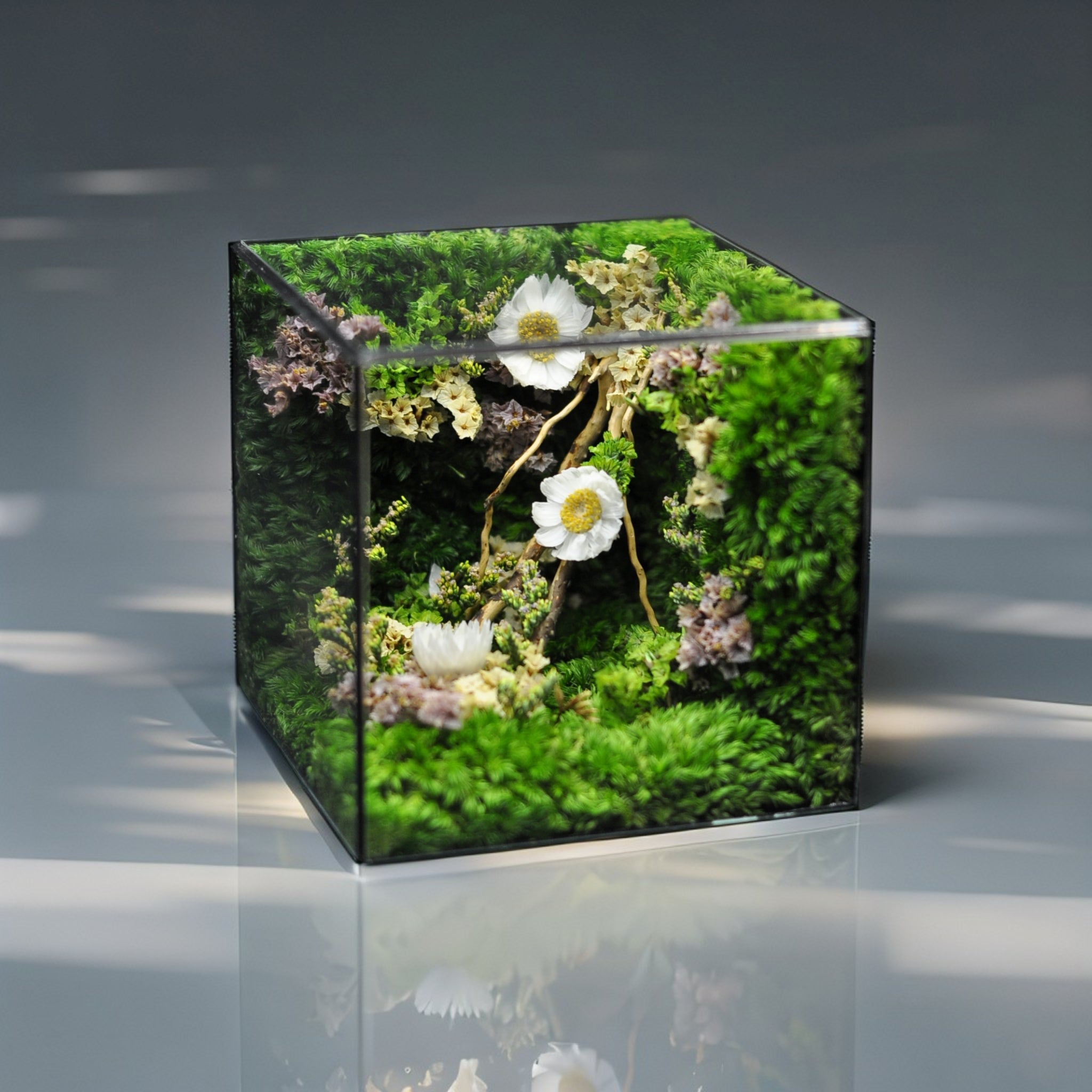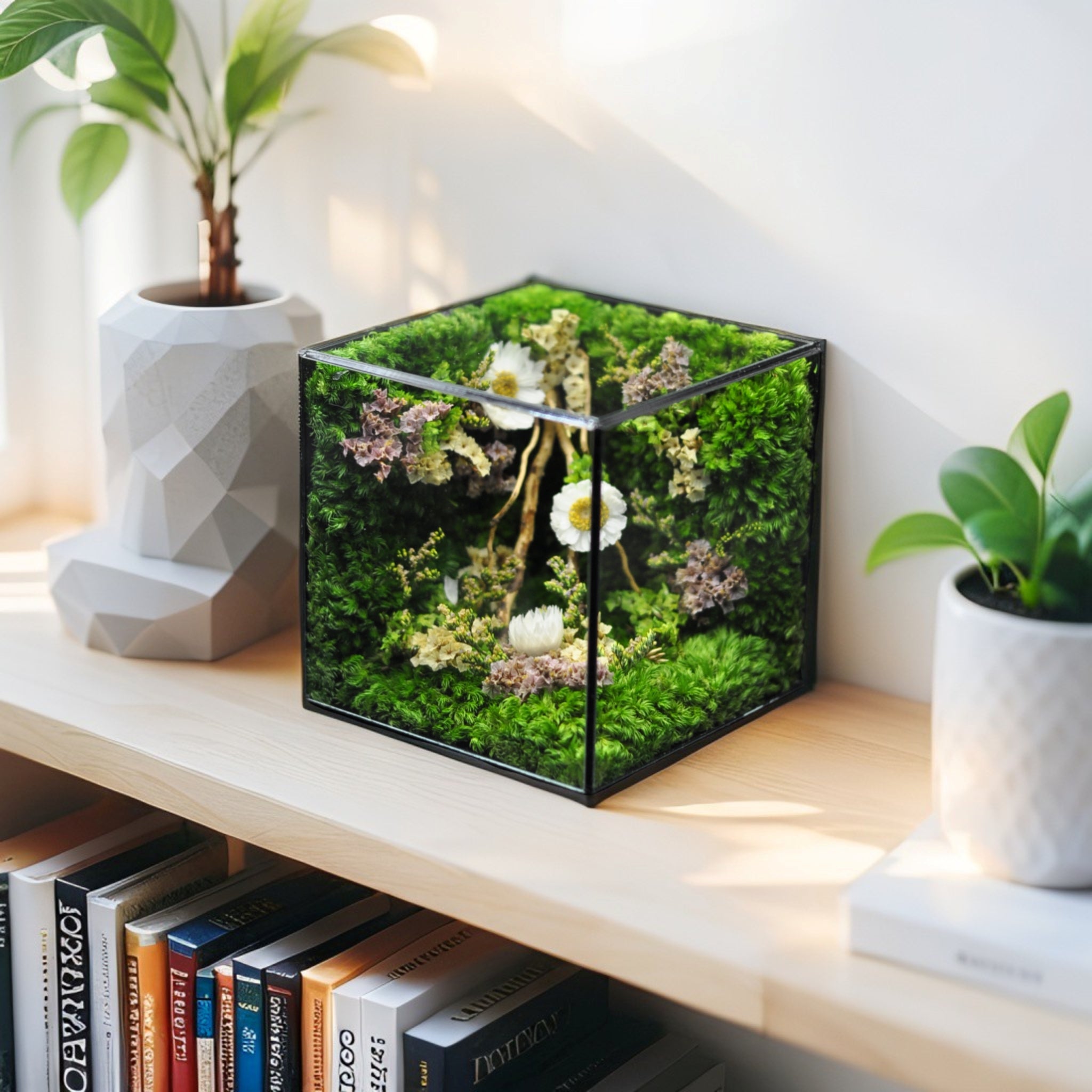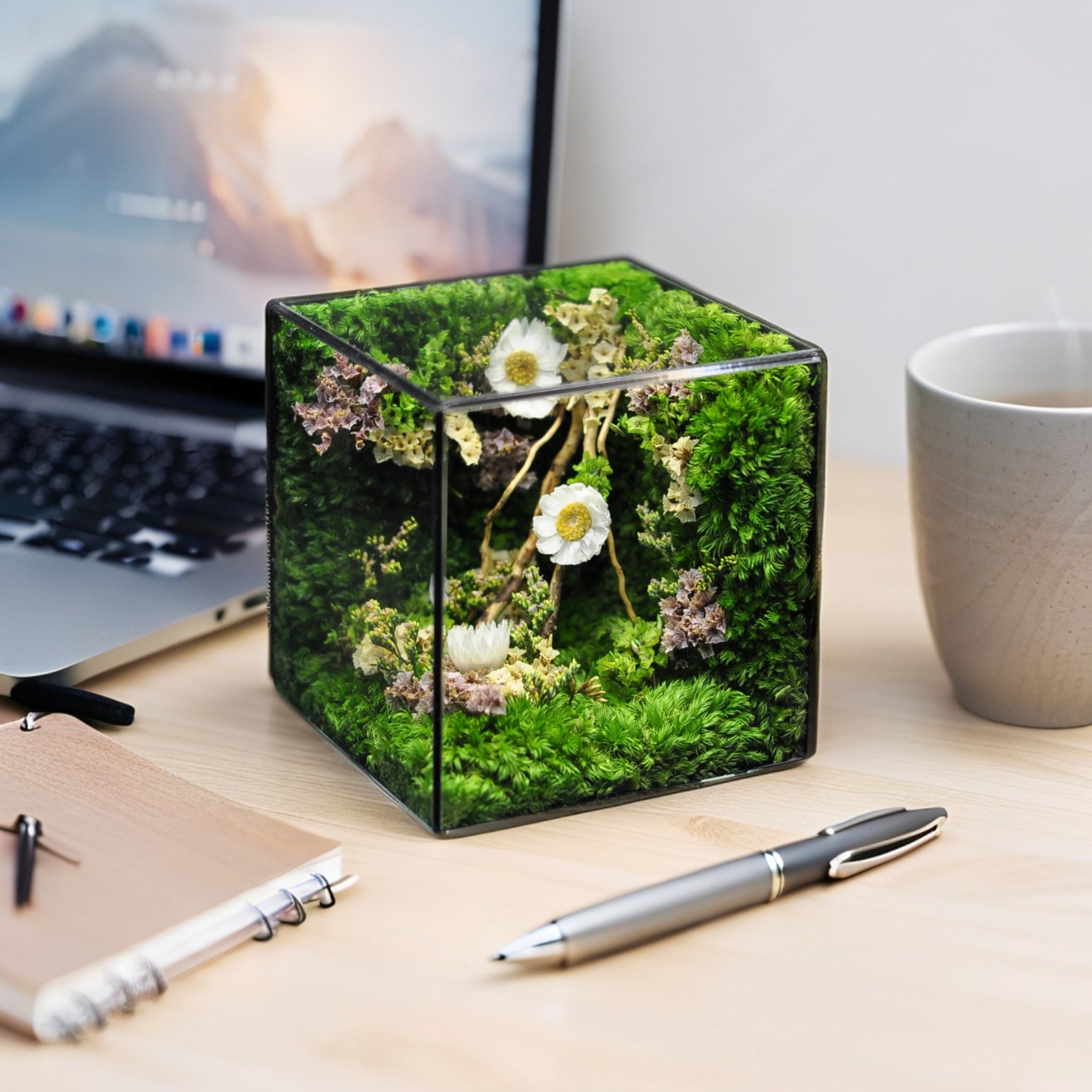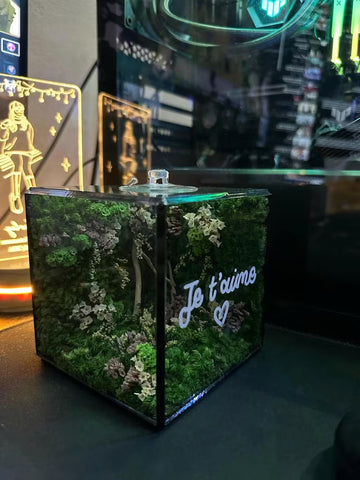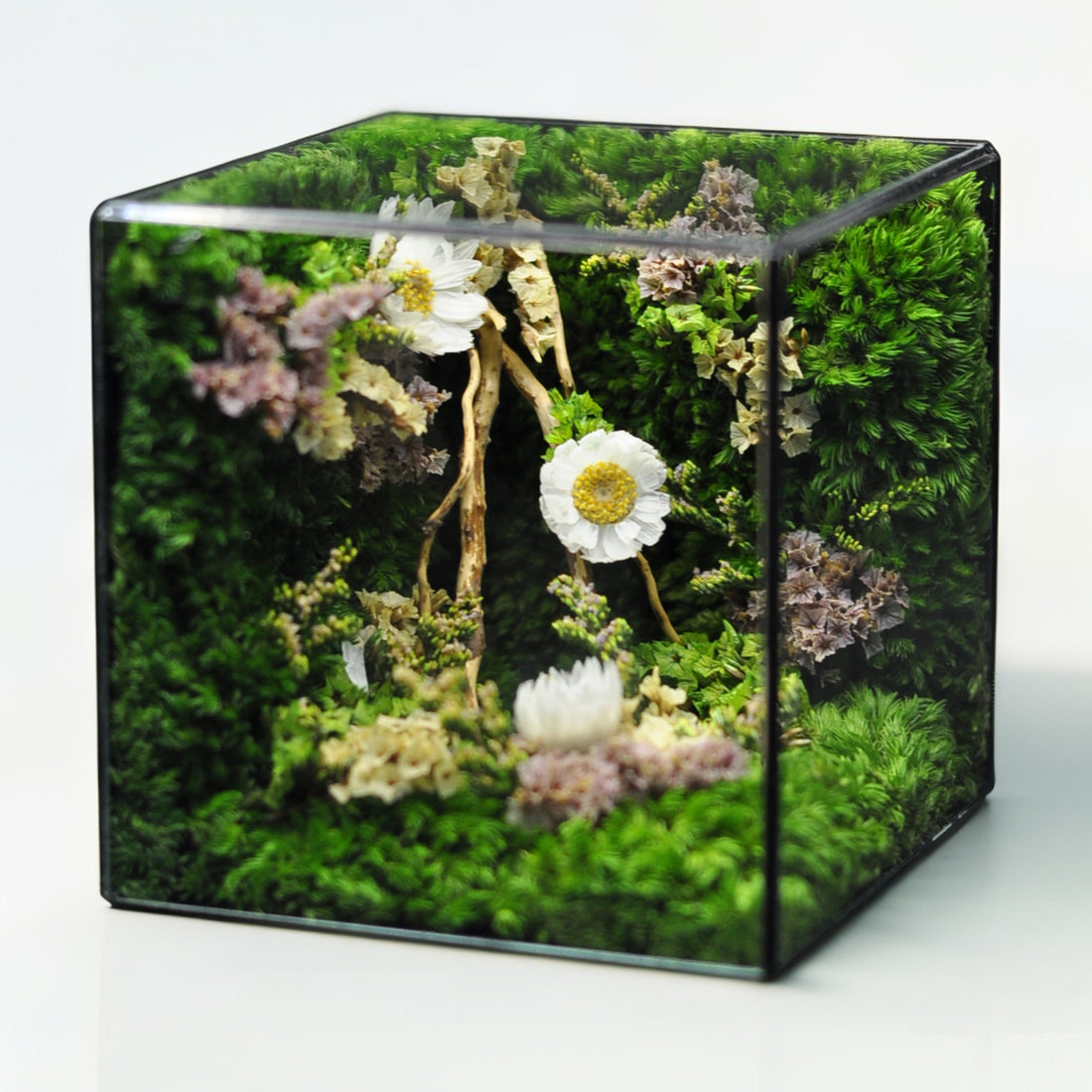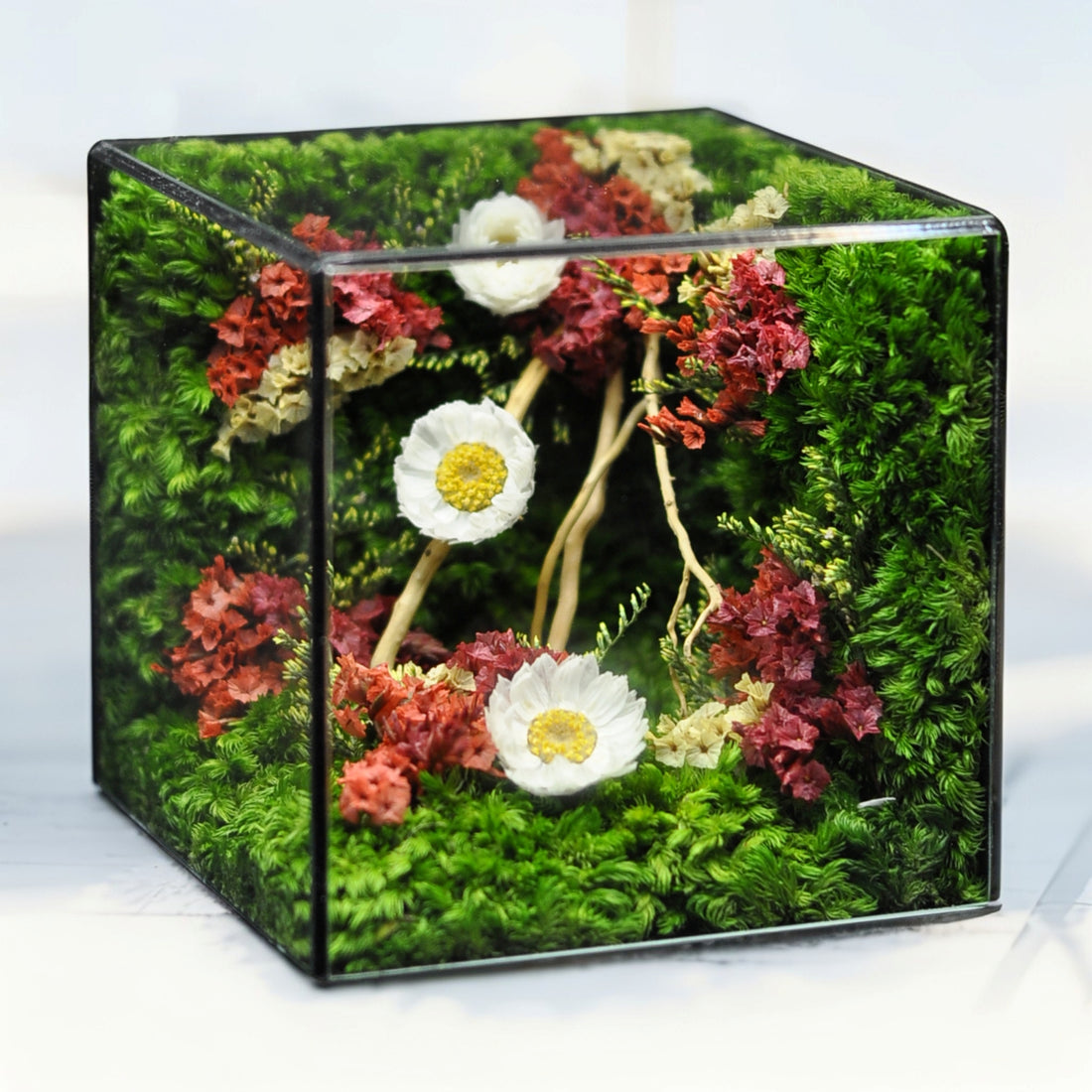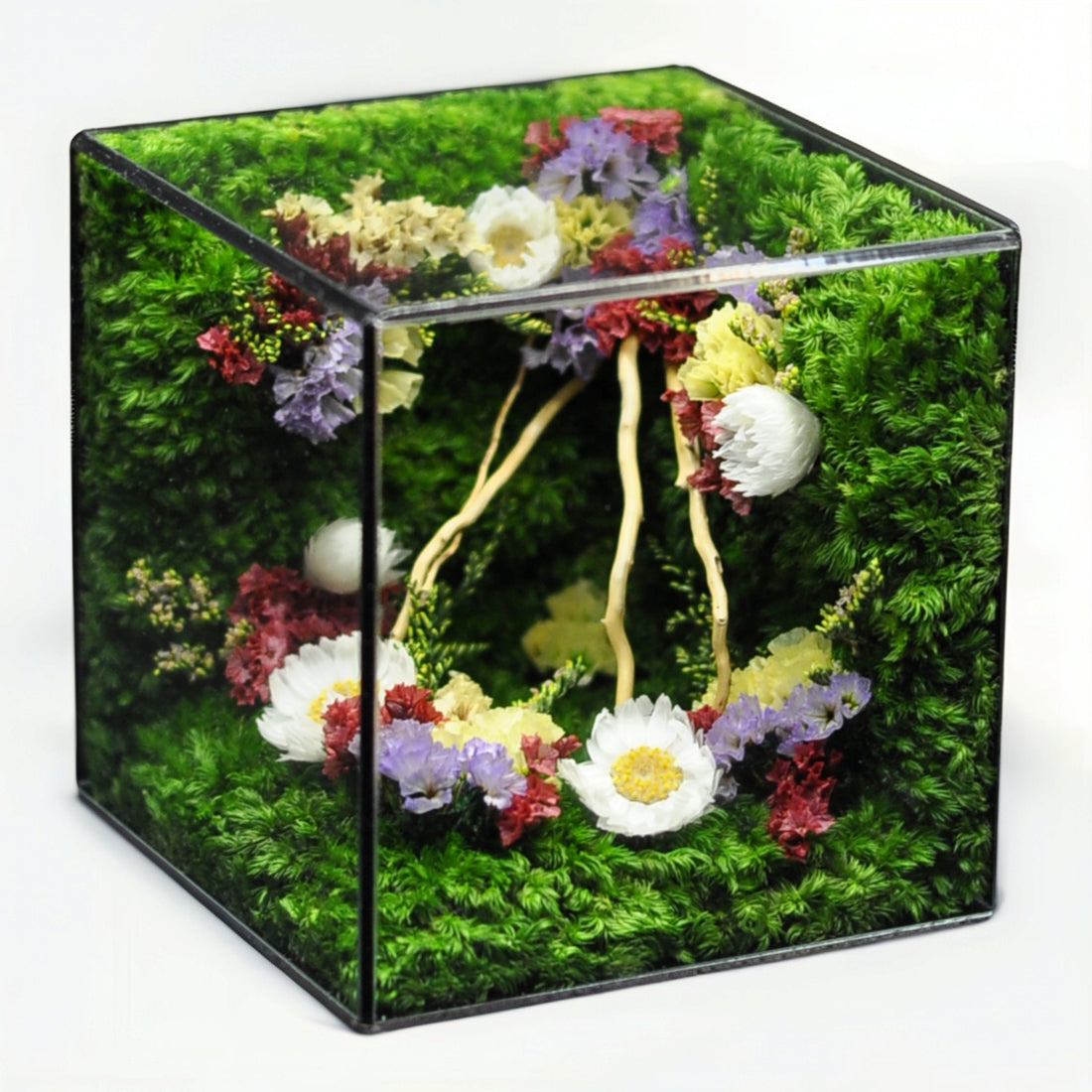Key Takeaways
Crafting a stunning indoor terrarium begins with selecting the right plants, understanding their unique care needs, and styling them for maximum visual impact. These key takeaways distill the top beginner-friendly species, essential maintenance tips, curated design templates, and a transparent purchasing guide—ensuring your terrarium journey is both rewarding and hassle-free.
- Select foolproof terrarium plants: Choose hardy species like ferns, mosses, succulents, air plants, and mini orchids that thrive in controlled moisture and light conditions, minimizing beginner mishaps.
- Match plants to terrarium type: Opt for humidity-loving ferns and mosses in closed containers, while succulents and air plants excel in open setups with better airflow.
- Align light, soil, and watering needs: Use moisture-retentive mixes for tropical species, fast-draining substrates for succulents, establish misting routines for closed terrariums, and spot-water open designs.
- Combine plant categories for depth: Layer ground-covering moss with mid-height ferns or cluster contrasting succulents and air plants to create texture, height variation, and vibrant focal points.
- Curate design-ready plant pairings: Follow themed templates like “Tropical Retreat,” “Desertscape Duo,” or “Mini Japanese Garden” to blend complementary species and accessories for instant aesthetic harmony.
- Shop smart with transparent price breakdowns: Compare local garden centers and online vendors, factoring plant costs (from $5 each), complete terrarium kits ($30–$60), and shipping fees to optimize your budget.
- Source healthy plants reliably: Prioritize reputable nurseries and specialized online retailers that provide clear grading, acclimation advice, and low-stress packaging to ensure vibrant arrivals.
- Maintain humidity and airflow balance: Prevent mold by adjusting lid positions, monitoring humidity with a hygrometer, and occasionally fanning open terrariums to keep air circulating.
With these insights in hand, you’re ready to dive into the full guide—where we explore each plant’s profile, detailed care instructions, and step-by-step design layouts to help you build and sustain breathtaking indoor gardens.
Introduction
Creating an indoor garden might seem daunting, but what if I told you that choosing the right terrarium plants could turn your space into a vibrant retreat with minimal effort? With the right selection, you can cultivate breathtaking mini ecosystems that not only thrive but also enhance your home's aesthetic.
This guide focuses on the ten best terrarium plants for beginners, ensuring that your first foray into this gardening trend is as rewarding as it is beautiful. From hardy ferns and adaptable succulents to enchanting air plants and delightful mini orchids, we’ll cover essential plant care, pairings, and design templates that simplify the process. Dive in to discover how to create a stunning indoor garden that reflects your personal style while easily flourishing in your living space.
Why Choose These Easy Terrarium Plants for Beginners?
Imagine a miniature rainforest or a desertscape thriving on your coffee table, drawing admiring glances and infusing your home with natural charm. Ready to build your first mini ecosystem? This guide not only walks you through the top beginner-friendly terrarium plants but also offers creative design templates and a clear budget breakdown to help you style and shop smart.
Benefits of Humidity-Loving Plants & Beginner-Friendly Species
- Foolproof Picks: Ferns, mosses, succulents, air plants, and mini orchids are among the most forgiving terrarium plants for beginners.
- Hardy Growth Habits:
- Ferns and mosses tolerate irregular watering and flourish in stable, humid environments.
- Succulents and air plants (Tillandsia) bounce back quickly from occasional neglect.
- Mini orchids adapt well to low light and high humidity inside closed terrariums.
- Minimize Beginner Mishaps: Species with broad tolerance for light and moisture fluctuations reduce the risk of rot, wilting, pests, and unsightly algae on glass.
Matching Terrarium Plants to Closed vs Open Terrariums
Open designs and sealed jars create very different microclimates. Choose plants that thrive in each environment:
- Closed Terrariums (sealed or partially closed glass containers):
- Ideal for humidity-loving plants like ferns (Maidenhair, Boston) and mosses (Sheet, Button).
- The self-sustaining moisture cycle keeps roots damp without constant watering.
- Open Terrariums (vessels without lids or wide openings):
- Best for succulents (Echeveria, Haworthia) and air plants (Tillandsia ionantha).
- Increased airflow prevents fungal issues and allows soil to dry between waterings.
Now that you know which plants suit each style, let’s explore the top 10 picks for your first terrarium.
Top 10 Best Terrarium Plants for Beginners
Humidity-Loving Ferns & Mosses (Closed Terrarium Favorites)
- Maidenhair Fern (Adiantum raddianum)
- Delicate, lacy fronds; thrives in bright, indirect light.
- Keep soil evenly moist—avoid waterlogged conditions to prevent root rot.
- Boston Fern (Nephrolepis exaltata)
- Arching fronds create lush volume.
- Prefers high Relative Humidity (RH) of 80–90% (Royal Horticultural Society guidelines)—monitor and adjust to your home conditions.
- Sheet Moss (Hypnum spp.)
- Soft, carpet-like groundcover; excels at moisture retention.
- Propagates easily by layering live fragments atop substrate.
- Button Moss (Leucobryum glaucum)
- Forms cushiony mounds—adds texture contrast.
- Requires minimal light; mist lightly 2–3 times weekly, adjusting based on visible condensation.
Succulents Perfect for Open Terrariums
- Echeveria ‘Lola’
- Rosette form with pastel hues; requires 4–6 hours of bright, indirect light.
- Water sparingly, allowing soil to dry fully between soakings.
- Haworthia attenuata (Zebra Plant)
- Hardy, drought-tolerant; tolerates lower light than many succulents.
- Water roughly once every 2–3 weeks, watching for shriveling leaves.
- Sedum morganianum (Burro’s Tail)
- Trailing stems ideal for layered designs; use a very well-draining mix.
- Let substrate dry completely before each deep watering.
- Crassula ovata (Jade Plant)
- Thick, glossy leaves; slow grower.
- Deep water but infrequently—usually every 4–6 weeks in open setups.
Low-Maintenance Air Plants
- Tillandsia ionantha
- Compact shape; blooms in vibrant pink and purple tones.
- Soak 20 minutes weekly, then shake off excess water and let dry face-down.
- Tillandsia xerographica
- Architectural silver foliage; dramatic focal accent.
- Mist 2–3 times weekly; ensure bright, indirect light and good air circulation.
Mini Orchids & Unique Accent Plants
- Phalaenopsis Mini
- Petite blooms; no special repotting required in humid terrariums.
- Dendrobium spp.
- Slender stems with occasional bloom spikes; enjoy consistent humidity.
- Jewel Orchid (Ludisia discolor)
- Dark, velvety leaves with contrasting veins; thrives in low to medium light.
Each of these ten species offers unique color, texture, and simplicity—perfect for your first bottle garden.
Essential Care Requirements for Your Terrarium Plants
Now that you’ve chosen your plants, here’s how to keep them thriving with minimal fuss.
Light Requirements: Closed Terrarium vs Open Terrarium
Closed terrariums need bright, indirect light (north- or east-facing window) while open designs do best with filtered light (2–4 hours of morning sun or bright shade). Rotate open containers every two weeks for even growth, and always avoid direct sun in sealed setups to prevent overheating.
Selecting the Right Soil Mix for Terrarium Plants
A well-designed substrate balances moisture retention, aeration, and toxin filtration:
- Tropical/Moisture-Loving Mix (Closed):
- 2 parts peat moss or coco coir for water retention.
- 1 part perlite for aeration and drainage.
- 1 part fine orchid bark to create air pockets around roots.
- Fast-Draining Substrate (Open Succulent/Cacti Mix):
- 2 parts coarse sand or perlite for rapid drainage.
- 1 part potting soil for nutrient support.
- 1 part pumice or grit to prevent compaction.
- Layering Essentials: Begin with 1–2 inches of drainage stones, add activated charcoal to adsorb toxins and odors, then top with your chosen soil blend. Proper layers ensure moisture control and fresh air at the roots.
How Often Should I Water My Terrarium Plants?
Closed Terrariums
- Mist lightly every 7–14 days or when condensation wanes—adjust based on substrate moisture (lack of dew indicates it’s time).
- Deep water only if the substrate dries completely.
Open Terrariums
- Spot-water succulents and air plants at the base every 2–4 weeks.
- Watch for slight leaf wilting or dry leaf bases as cues.
Using a Hygrometer
- Aim for 70–85% RH in closed terrariums; 40–50% RH in open setups.
- Track daily RH trends to prevent under- or over-watering.
Maintaining Airflow to Prevent Mold
Mold spores flourish between 20–25 °C in stagnant, high-humidity conditions. Combat them by:
- Opening the lid for 1–2 hours weekly to exchange stale air.
- Gently fanning the interior or cracking the lid to reduce condensation.
- Watching for persistent droplets—if they appear, boost ventilation until moisture levels stabilize.
Creative Design & Styling Templates for Stunning Indoor Gardens
Mixing plant types, textures, and accessories brings your mini indoor garden to life. Try a split-container experiment—half with charcoal, half without—to see the difference in freshness firsthand.
Combining Plant Categories for Depth & Texture
Start with a velvety groundcover of sheet or button moss. Introduce mid-height focal plants like a Maidenhair fern or mini Phalaenopsis orchid for vertical interest, then cluster succulents and air plants at varying heights to add color and form.
Themed Plant Pairings & Layouts
For cohesive style, pick a theme:
- Tropical Retreat: Ferns, moss, driftwood, and a tiny water feature evoke a rainforest vibe.
- Desertscape Duo: Succulents, sand accents, and sculptural stones channel arid beauty.
- Mini Japanese Garden: Moss, bonsai-style air plants, and miniature lanterns create serene simplicity.
Accessory & Layout Tips for Maximum Visual Impact
Anchor compositions with rocks of varying sizes and define zones using contrasting substrates (dark soil vs pale sand). Decorate sparingly with miniature bridges or animal figurines to add scale and narrative without clutter.
Where to Buy Healthy Terrarium Plants: Shopping & Budget Guide
Where Can I Buy Healthy Terrarium Plants Online?
- The Sill (https://www.thesill.com/collections/terrarium-plants)
- Plant Delights Nursery (https://www.plantdelights.com/plants/category/houseplants)
- Air Plant Supply Co. (https://airplantsupplyco.com)
Look for live-arrival guarantees, clear acclimation instructions, and positive customer reviews.
Local Garden Centers vs Online Vendors: Price Breakdown
| Source | Item Type | Price Range | Shipping Fees || -------------------------- | ------------------- | -------------- | ------------------ || Local Garden Center | Individual plants | $5–$10 | $0 || Online Specialty Retailer | Individual plants | $7–$15 | $5–$10 || Online Terrarium Kits | Complete kits | $30–$60 | Often free over $50|
Download our detailed cost-comparison chart: https://example.com/terrarium-cost-comparison-chart
Tips for Spotting Quality Specimens Before Purchase
- Grading Standards: Choose vibrant foliage—no yellow or brown spots.
- Acclimation Advice: Vendors should include care instructions for a smooth transition.
- Leaf & Root Health: Look for firm, white roots and plump succulent leaves or crisp fern fronds.
Troubleshooting Common Challenges with Terrarium Plants
Managing Excess Humidity & Mold Growth
- Hygrometer Alerts: If RH exceeds 90%, open the lid until it stabilizes at 75–85%.
- Algae & Persistent Condensation: Wipe glass clean, reduce misting, and improve ventilation.
Preventing Overwatering & Root Rot
- Drainage Layers: Ensure 1–2 inches of pebbles or LECA beneath soil.
- Watering Mats: Place beneath the vessel to catch leaks and avoid sitting water.
- Substrate Observations: Brown, slimy particles mean it’s time for fresh soil.
Addressing Pest Infestations & Plant Stress
- Common Pests: Fungus gnats, mealybugs, spider mites.
- Natural Remedies:
- Yellow sticky traps for gnats
- Diluted neem oil (0.5%) spray for soft-bodied insects
- Quarantine Tips: Isolate new plants for 2–4 weeks outside the main terrarium.
Beginner’s Success Story
“When I first built my closed jar, the soil stayed too wet and algae covered the glass. After adding button moss and opening the lid for two hours weekly, clear condensation and thriving ferns became the rule. Seeing that transformation inspired me to design more bottle gardens!”
—Jenny, first-time terrarium hobbyist
Ready to start your own bottle garden? Share a photo of your terrarium in the comments below or tag us on social media with #MyBottleGarden. For more on succulent propagation, learn more about propagating succulents from leaf cuttings.
Conclusion
Creating a terrarium offers an engaging opportunity to connect with nature while beautifying your living space. This guide has introduced you to beginner-friendly plants, highlighting options like ferns, mosses, and succulents that thrive in both closed and open terrariums. Understanding the specific needs of these plants, along with practical care tips, minimizes the risk of common pitfalls and enhances your chances for success.
By selecting the right species, employing effective design techniques, and following essential care guidelines, you can cultivate a vibrant indoor ecosystem that reflects your personal style. Remember, the journey into terrarium gardening is as rewarding as the results. As you embark on this creative venture, consider documenting your progress and sharing your experiences with others to inspire fellow beginners—because each unique garden tells a story waiting to be shared.
Frequently Asked Questions (FAQ)
Q: What plants work best in a closed terrarium?
A: Humidity-loving species like ferns (e.g., Maidenhair, Boston) and mosses (e.g., sheet, button) thrive in closed terrariums thanks to the self-sustaining moisture cycle.
Q: How often should I water my terrarium plants?
A: In closed terrariums, mist lightly every 7–14 days or when condensation wanes and deep-water only if the substrate dries. In open terrariums, spot-water succulents and air plants every 2–4 weeks, using slight leaf wilting or dry bases as cues.
Q: Can succulents be grown in a terrarium?
A: Yes. Succulents like Echeveria ‘Lola’, Haworthia attenuata, Sedum morganianum, and Crassula ovata perform best in open terrariums with good airflow and a well-draining soil mix.
Q: What is the best soil mix for terrarium plants?
A: For closed terrariums, use 2 parts peat moss or coco coir, 1 part perlite, and 1 part fine orchid bark. For open succulent setups, use 2 parts coarse sand or perlite, 1 part potting soil, and 1 part pumice or grit. Always start with drainage stones and activated charcoal beneath the soil.
Q: Where can I buy terrarium plants online?
A: Recommended online sources include The Sill, Plant Delights Nursery, and Air Plant Supply Co., all offering live-arrival guarantees and clear acclimation instructions.
Q: How can I prevent mold growth in my terrarium?
A: Open the lid for 1–2 hours weekly to exchange air, fan or crack it to reduce condensation, wipe away any algae, and adjust misting and ventilation until moisture levels stabilize.
Q: How should I layer the substrate in a terrarium?
A: Begin with 1–2 inches of drainage stones, add a layer of activated charcoal to adsorb toxins and odors, then top with your chosen soil blend (tropical or fast-draining) for balanced moisture control and aeration.



